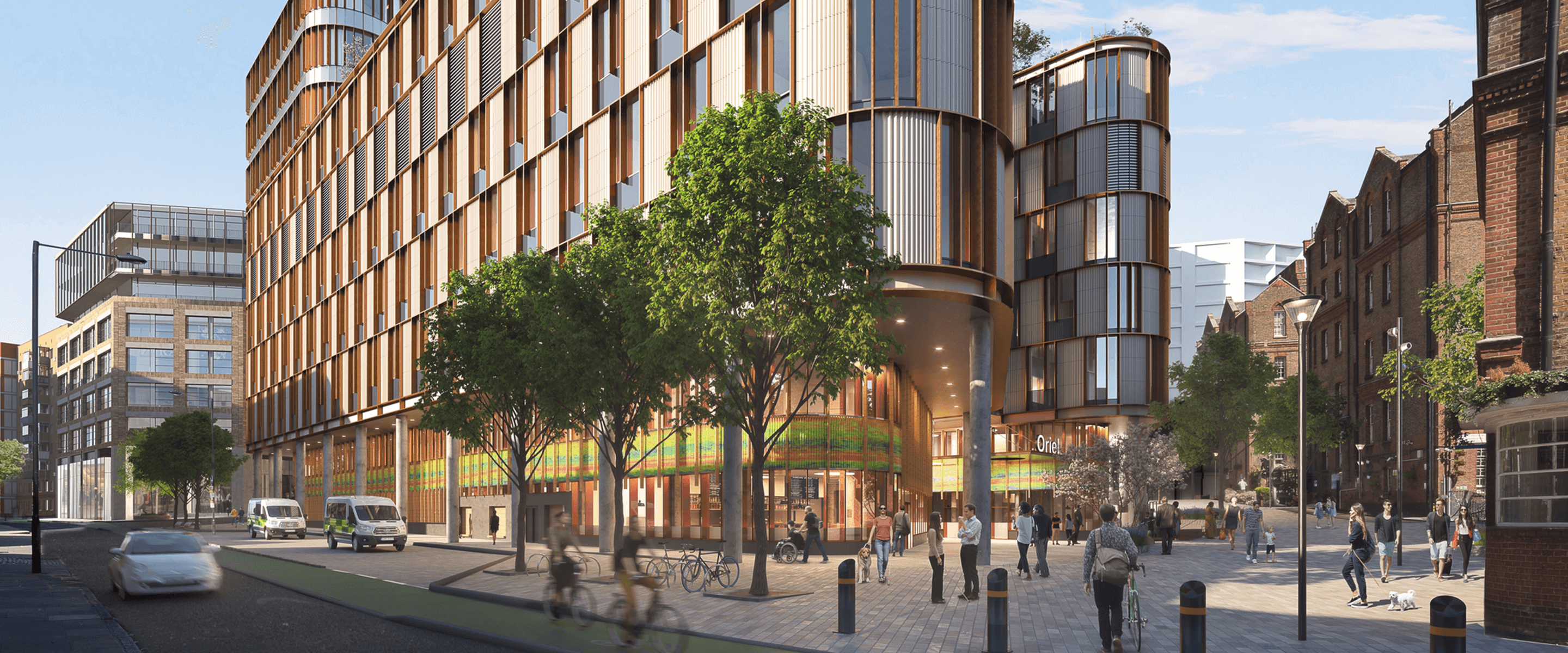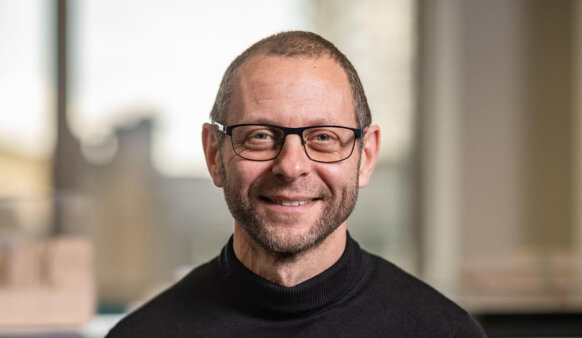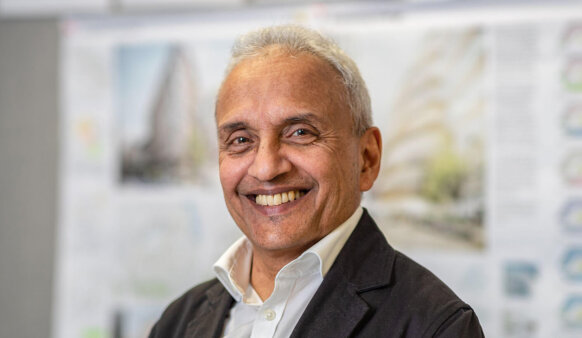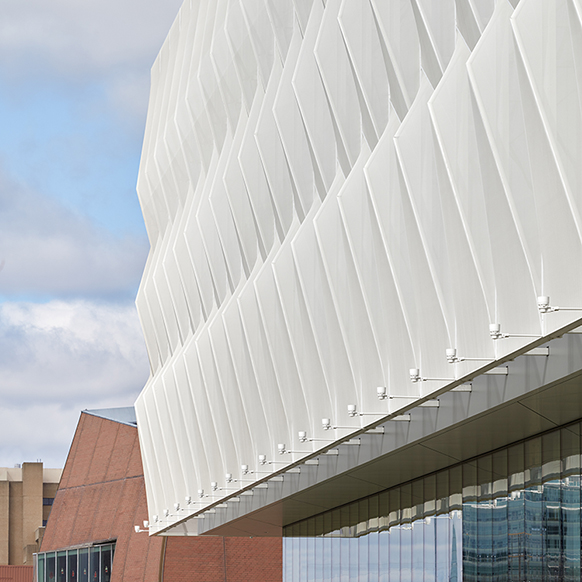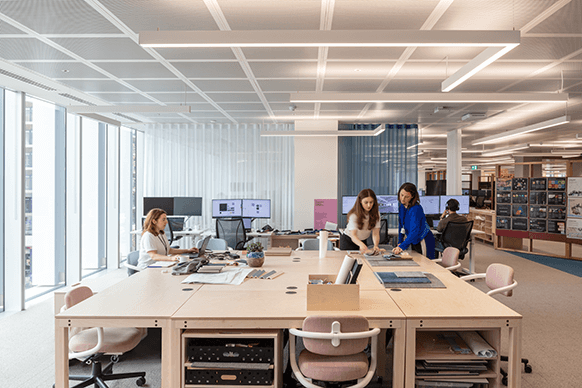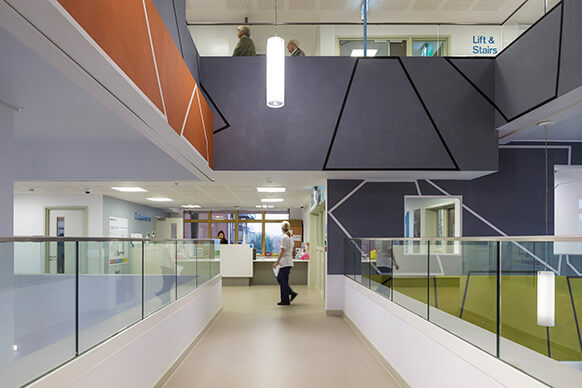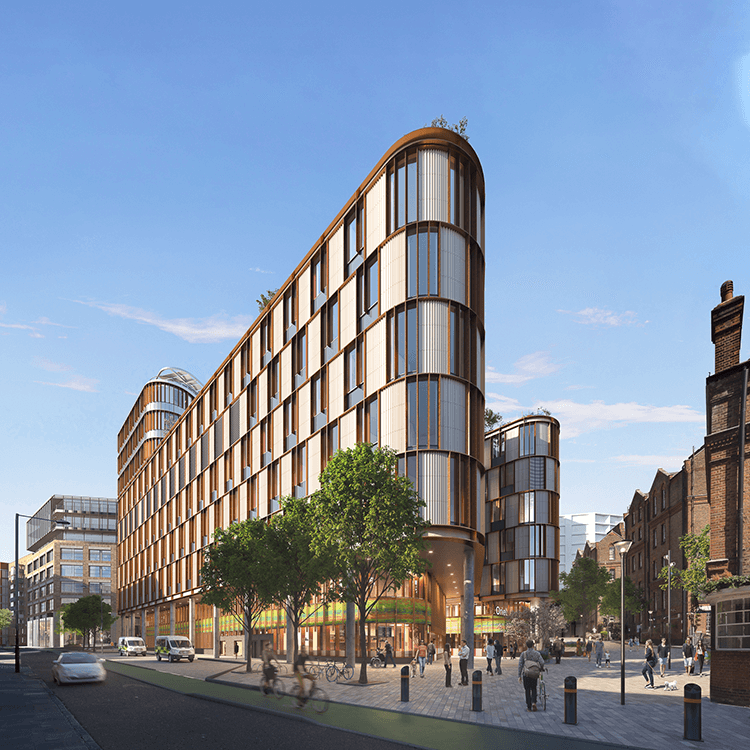
Oriel
Oriel is a joint initiative between Moorfields Eye Hospital, UCL Institute of Ophthalmology, and Moorfields Eye Charity, bringing together world-leading eye care, research, and education under one roof.
Our vision is to create an environment for innovation to flourish, inspiring improvements in people’s sight. The flexible and modern facility, designed to accommodate current and future research as well as clinical and educational needs, will enable the partners to widen their research portfolio and better include patient engagement and participation in their research. Focused on patients while attracting and retaining the best ophthalmic scientists, educators, and clinicians, the new building will bring together world-leading clinical care, research and education expertise into one, fully integrated centre.
Serving as the project’s lead architects, we partnered with White Arkitekter for interior and landscape design as well as Aecom for engineering, sustainability, planning, and overall project leadership.
The centre integrates three distinct spaces to promote collaboration among clinicians, patients, and researchers. This will offer a flexible framework for evolving research and education practices and serve as a beautiful centrepiece for a renewed St Pancras within the evolving Knowledge Quarter in Central London.



The building will occupy part of the old St Pancras Hospital site. It is arranged as two wings of eight and six stories stepping from the dense urban grain to the north of the site down to the retained Victorian buildings and magnificent trees of St Pancras Churchyard on the southside. At its heart will be a mini tower dubbed ‘the Oriel,’ comprised of a stack of waiting, meeting, and study spaces that interconnect every floor of the building. The landscape and interior design will stimulate the senses, promote well-being, and help wayfinding. An environmental strategy anticipates a renewable energy future and the incorporation of circular economy principles.
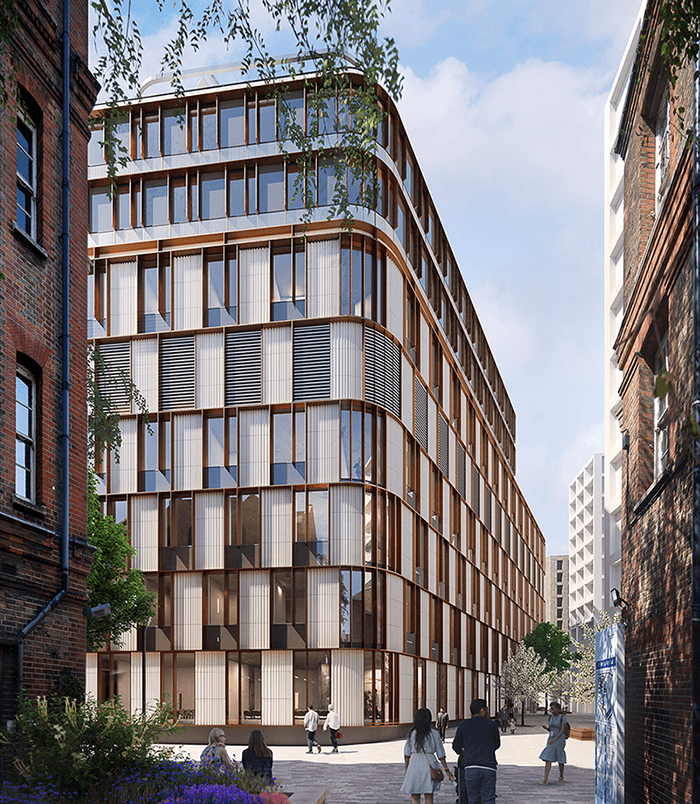
― Jury Report



